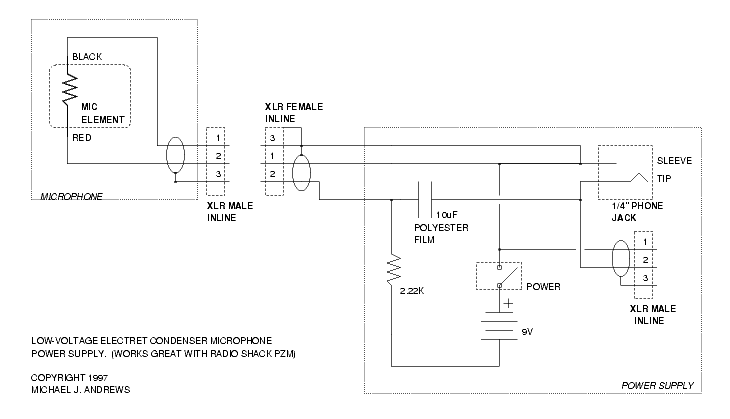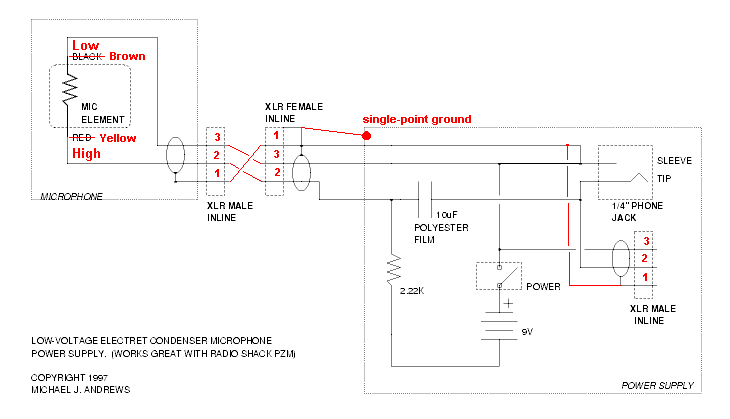


The microphone element in this thing has a 2.2K ohm impedance, and needs a DC bias of anywhere from 1.5V to 10V. Increasing the bias voltage is generally regarded to be a Good Thing. Note the use of the large 10uF coupling capacitor - it really should be metallized polyester film or some equivalent type and it really should NOT be an electrolytic, if you're looking to improve the sound quality. I used a Cornell Dublier miniature metallized polyester film cap (Mouser #5989-100V10), expensive, but it sounds good - it's difficult to find film caps with that high of a capacitance.
Results were excellent. There's an expected "pop" when the switch is turned on, but the sound quality and noise level were on the level of "a whole new microphone." Highly recommended.
Update: 6/29/98
I originally built the thing in a dumb plastic case which really was subject
to hum. I'm re-casing it. Results forthcoming.
Update: 8/28/2000
Sylvain in France proposed some modifications to the circuit. These may help you understand my baked diagram, and may improve hum problems! Thanks Sylvain!

| Information updated on Tuesday, 4 May 2004. |
| rocko@gweep.net |